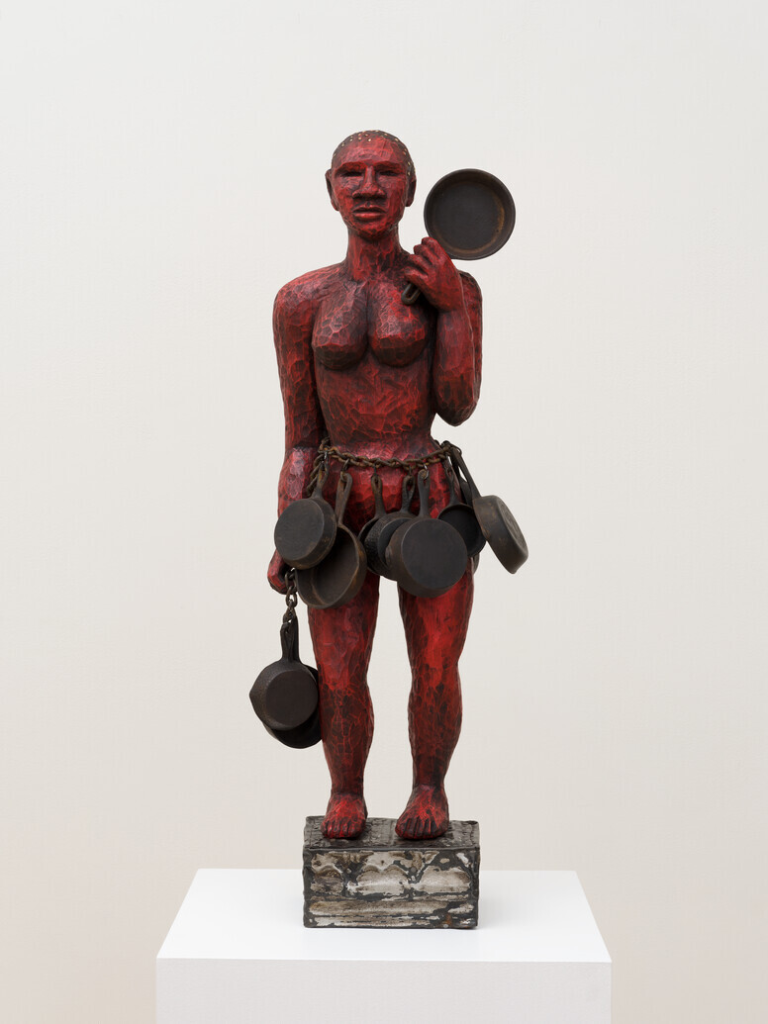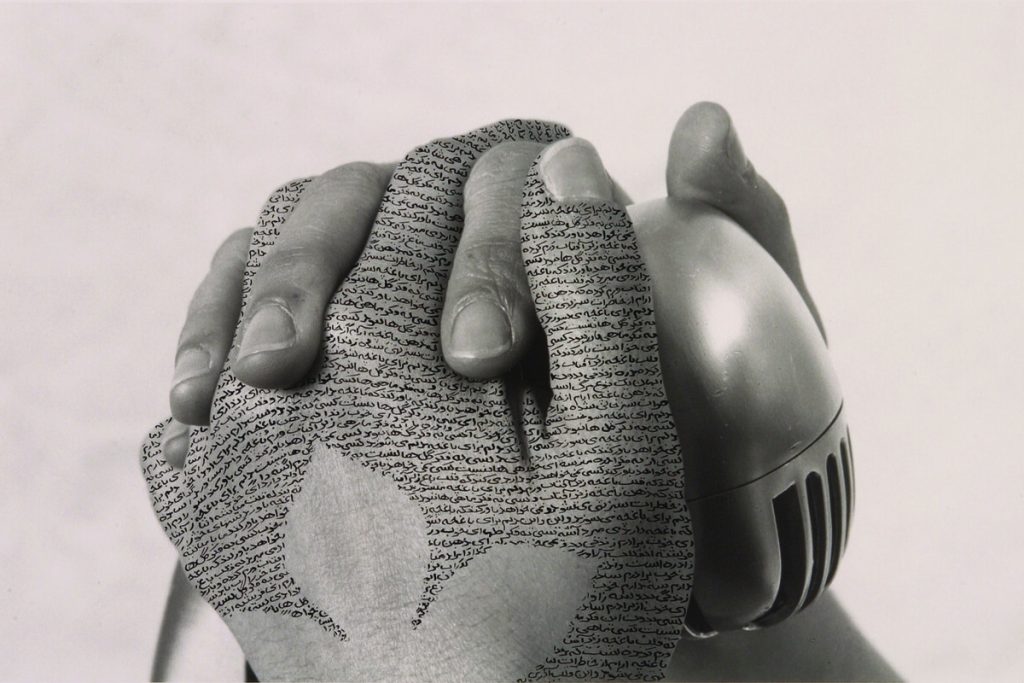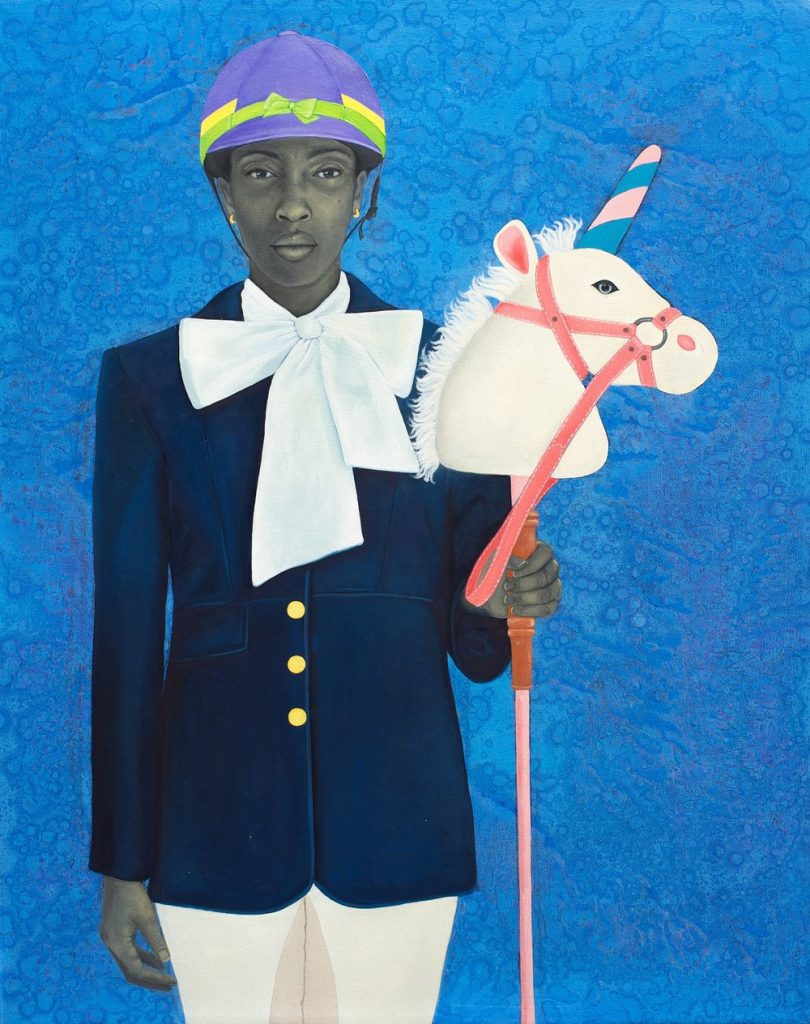Slow Art Day 2024 is coming up this Saturday, April 13 and yet again there are an amazing variety of museums, galleries, churches, cities, sculpture parks joining us from around the world (see the full list) – including across the East Coast of the United States.
To name just a few across the East Coast…
The Metropolitan Museum of Art’s Met Cloisters will be hosting again in New York City.
Mass MoCA will be hosting again in North Adams, MA while the Worcester Art Museum will yet again produce a Slow Art Day in that city. The beautiful and wonderful Athenaeum will be hosting in Boston. Connecticut and New Jersey supports several locations including the Grounds for Sculpture.
Philadelphia has a nascent citywide including The Barnes Foundation, Glenn Foerd, and the Magic Gardens.
In Washington D.C., the National Museum of Women in the Arts is hosting yet again (they are one the founding museums for Slow Art Day). Virginia and North Carolina have multiple locations across those states while Florida hosts *7* different venues including the Frost Art Museum and the Lowe Art Museum both in Miami.
Here are a few locations –
Mass MoCA
This year, Mass MoCA has created two ways to experience Slow Art Day:
- Slow Looking Tours
- A paired audiowalk they are calling “Where I End & You Begin,” which requires advance reservations.
The museum has had a close relationship with artist James Turrell and with the now-deceased Professor Arden Reed who wrote a terrific book, “Slow Art : The Experience of Looking, Sacred Images to James Turrell”, which talks about Slow Art Day (and for which I gave a blurb on the back cover).
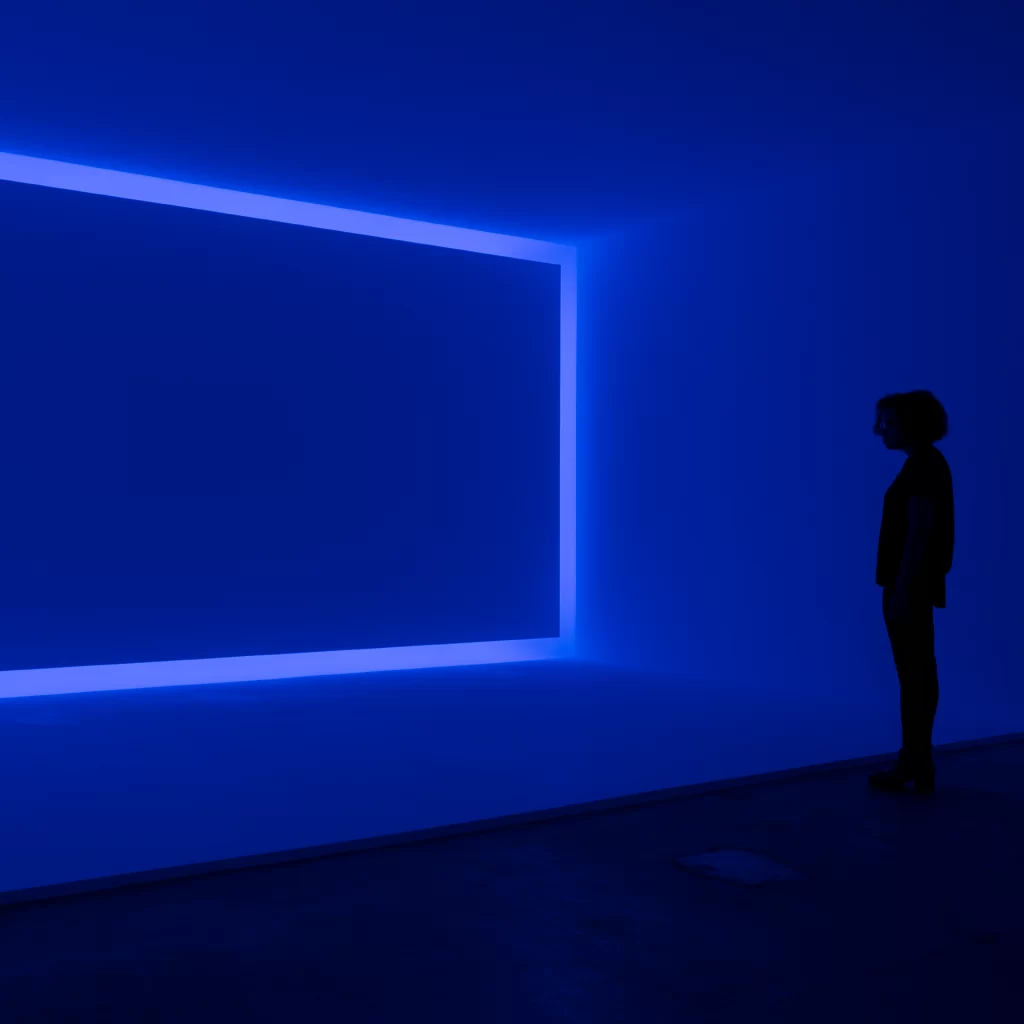
Barnes Foundation
The Barnes always produces a thoughtful and interesting Slow Art Day (and we are in conversations with them about a conference – stay tuned for more details).
This year, when participants arrive, they will receive a list of five paintings for self-guided slow looking. They will be encouraged to spend an hour or so looking, and then will be invited to a discussion in the Herbert and Joyce Kean Family Classroom. That discussion will be led by Barnes senior instructor Michael Williamson.
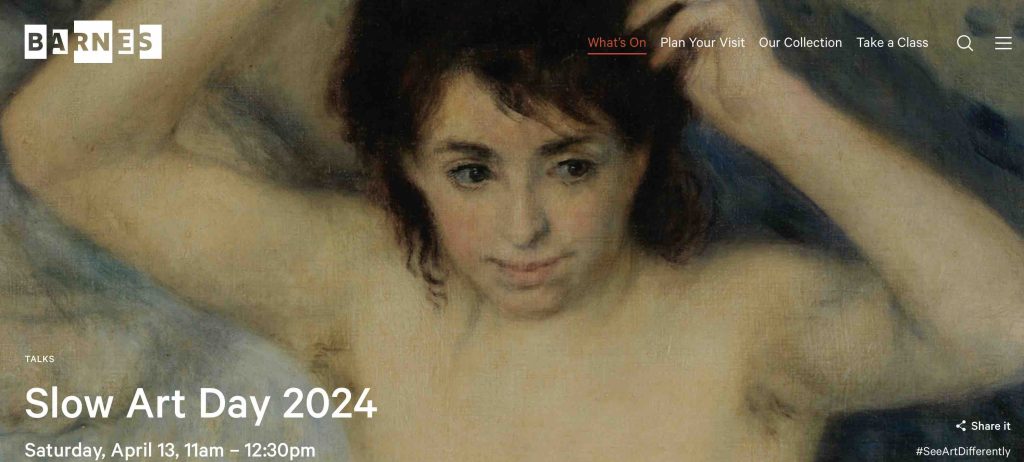
National Museum of Women in the Arts
We love the National Museum of Women in the Arts – they are founders of the Slow Art Day movement and they have led the global re-awakening to the centuries-old role of women artists.
Their event this year is sold out. So, if you live in Washington, DC then plan ahead for their Slow Art Day 2025.
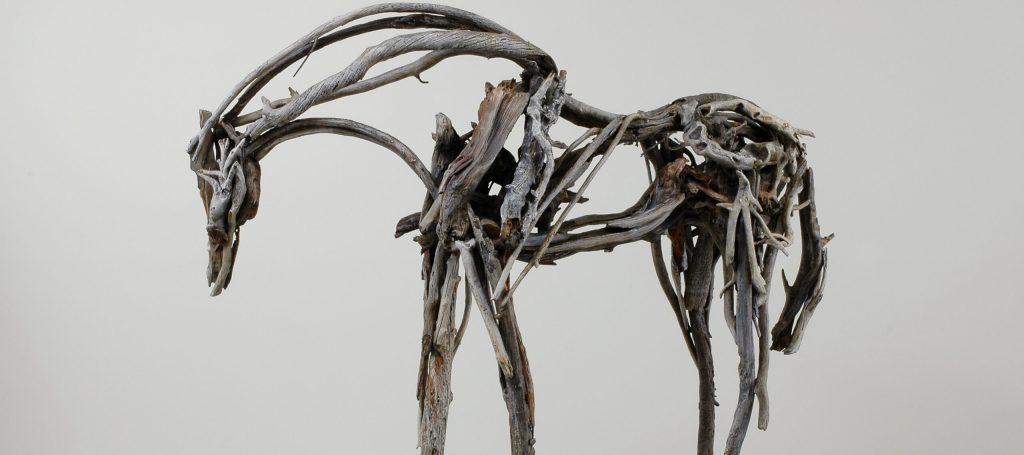
Boston Athenaeum
The Boston Athenaeum, which combines a library, with a museum and cultural center, is hosting Slow Art Day in their landmark building.
They will be focusing on a single painting by Boston artist Allan Rohan Crite.
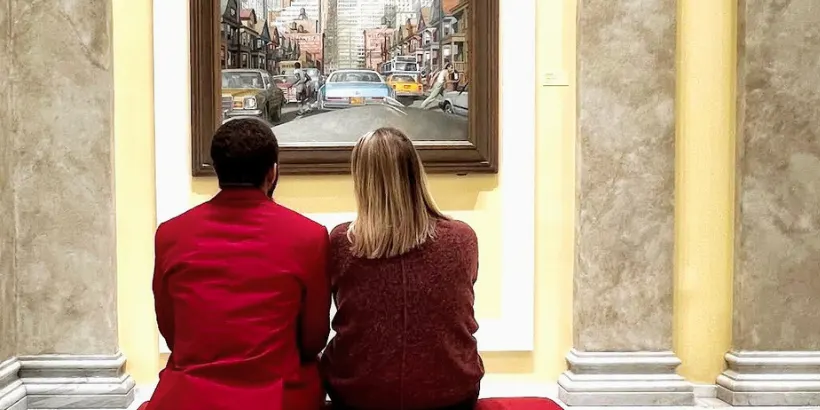
Worcester Art Museum
Our friends at Juniper Rag are co-sponsoring a Slow Art Day at the Worcester Art Museum. The WAM will be focusing their slow looking event on the new Terrain Exhibition, which features 21st-Century landscape photographers and how these contemporary artists use different photographic processes to explore the idea of landscape.
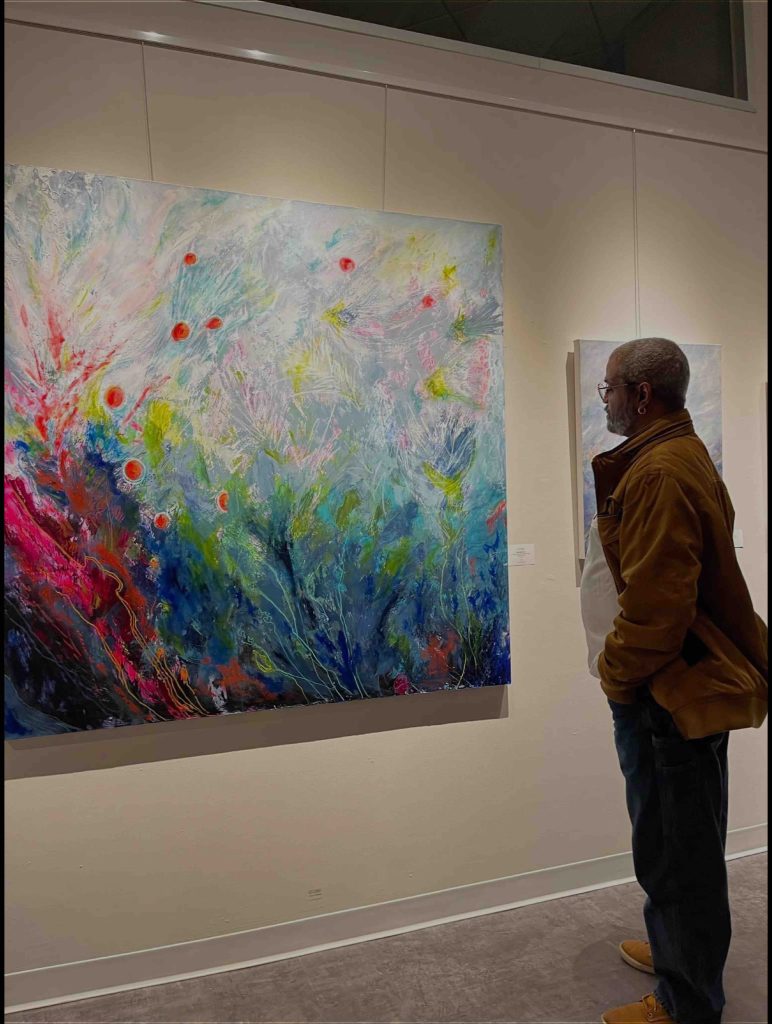
Frost Art Museum
For their *13th* Slow Art Day (Frost is one of the founding museums of this slow looking movement), Frost will feature performances by Miami-based artists Smita Sen (pictured on the right – below), who explores the relationship between the body and memory through sculpture and technology, and Agua Dulce (left – below), a Miami-based artist who uses organic materials to blur the line between the mystical and mundane.

These are just a few of the hundreds of places hosting events around the world this year.
And, of course, you can run your own personal Slow Art Day anywhere anytime.
We hope you have a wonderful Slow Art Day 2024.
– Phyl
P.S. If you have not yet registered your Slow Art Day with us, then go to this page.
P.P.S. Our 2023 Annual Report is out. Read it and get inspired!

